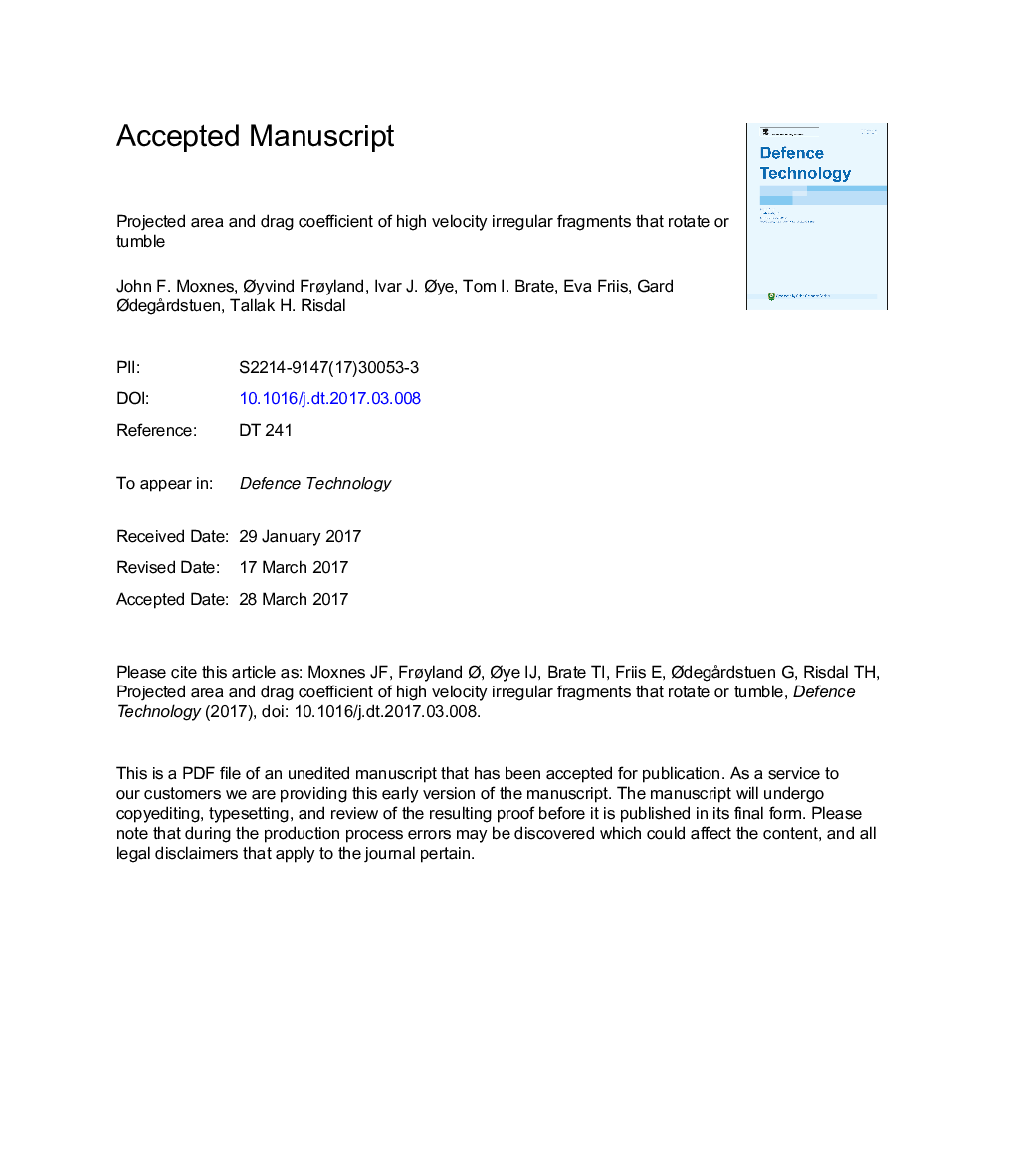| Article ID | Journal | Published Year | Pages | File Type |
|---|---|---|---|---|
| 7157694 | Defence Technology | 2017 | 27 Pages |
Abstract
3 degrees of freedom (DOF) exterior ballistic computer models are used in fragment studies to calculate individual trajectories of each fragment based on drag coefficient and the projected (presented) area in the direction of velocity of center of mass. The expectation of a randomly distributed projected area is commonly used for fragments that tumble (random rotation) during flight. We forecast a model where the expected drag coefficient is dependent of shape and Mach number. Rotation or tumbling only affects the expected projected area. Models of projected areas during tumbling and rotation are presented. An examination of the data by McCleskey (1988) indicates that the volume of the fragment to the power of 2/3 is a better parameter to characterize the drag coefficient of the fragments than the maximum projected area. Hydrocode simulations are used to verify results and to study projected area and drag coefficient of fragments.
Related Topics
Physical Sciences and Engineering
Engineering
Control and Systems Engineering
Authors
John F. Moxnes, Ãyvind Frøyland, Ivar J. Ãye, Tom I. Brate, Eva Friis, Gard ÃdegÃ¥rdstuen, Tallak H. Risdal,
